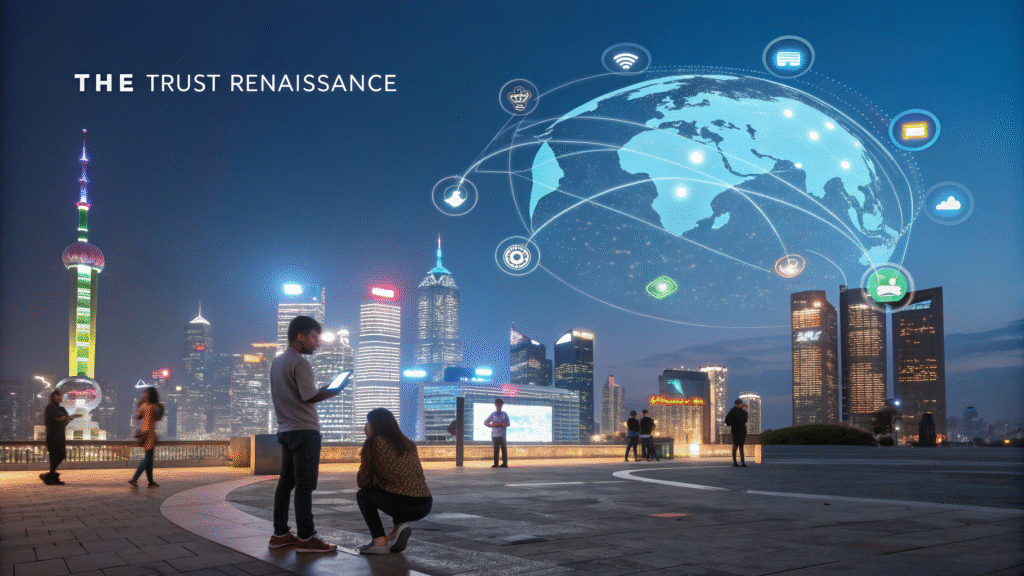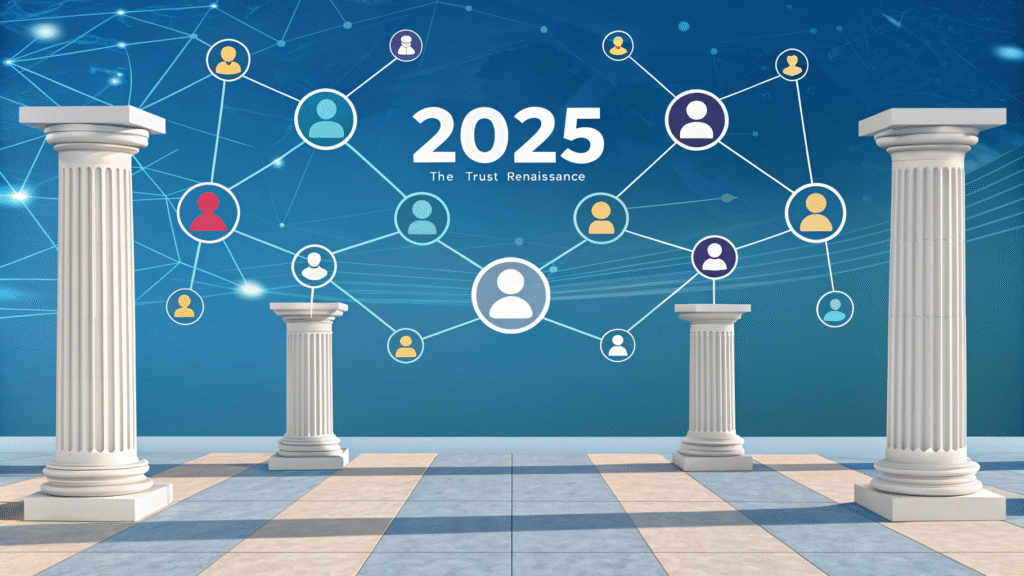
Introduction
The landscape of social media is undergoing a profound transformation. After years of skepticism fueled by data scandals, algorithmic opacity, and misinformation, a new era is dawning. The central theme for 2025 is clear: rebuilding digital trust. This isn’t just a minor trend; it’s a fundamental shift reshaping how platforms operate and how businesses connect with audiences. For entrepreneurs, marketers, and content creators, understanding the future of social media in 2025 is crucial for staying relevant and effective. This article delves into the strategies, technologies, and cultural changes driving this shift, offering a roadmap for navigating a more authentic and trustworthy digital world.
History & Evolution: From Skepticism to Solutions
To appreciate the present, we must understand the past. The journey to rebuilding digital trust has been a direct response to the challenges of the last decade.
- The Age of Exploitation (2010s): The 2010s saw rapid growth, but users increasingly felt uneasy. The 2018 Cambridge Analytica scandal was a turning point, revealing how personal data could be misused.. Trust began to erode as users realized they were the product, not the customer.
- The Regulatory Reckoning (Early 2020s): Governments worldwide responded with legislation like the EU’s Digital Services Act (DSA) and various national privacy laws. These regulations forced platforms to be more accountable for content moderation and data handling, laying the groundwork for change.
- The User-Led Revolt (Mid-2020s): Empowered by new options and greater awareness, users started migrating to platforms that prioritized transparency and control. This consumer pressure became the most potent force for change, pushing legacy networks to adapt or risk obsolescence.
Alt text: A visual history leading to the future of social media in 2025, focused on rebuilding digital trust.
Audience & Demographics: Who Demands Trust?
The push for rebuilding digital trust is being driven by a diverse coalition of users with varying motivations.
- Consumers (The Empowered User): Modern users are savvier and more privacy-conscious. They actively seek out platforms that offer clear data policies, transparent algorithms, and robust control over their experience. Their loyalty is now earned through authenticity.
- Content Creators (The New Economy): For creators, trust is their currency. They rely on transparent algorithms to reach their audience and fair revenue-sharing models. Platforms that support creator success through open communication are winning their allegiance.
- Businesses and Marketers (The Adaptive Strategist): Brands can no longer build on shaky foundations. The future of social media in 2025 demands marketing strategies rooted in genuine connection. Businesses are investing in platforms where their ads won’t appear beside harmful content and where engagement metrics are verifiable.
- Regulators (The Enforcers): Governments continue to play a key role, acting as watchdogs to ensure platforms comply with evolving standards for safety and transparency.
Key Features & Functions: The Tools of Trust
In 2025, rebuilding digital trust is being operationalized through specific platform features and functions.
Transparency Dashboards
- Algorithm Explanations: Platforms now provide users with simplified insights into why they see certain content. A post might be labeled, “You’re seeing this because you engaged with similar content from [Source].” This demystifies the feed and reduces suspicion.
- Ad Transparency Hubs: Users can see exactly who paid for an ad, the target demographics, and how much was spent. This feature, often mandated by law, helps combat misinformation in political and commercial advertising.
Enhanced User Control and Privacy
- Granular Data Settings: Instead of complex, all-or-nothing privacy menus, users have fine-tuned control over each data point. They can easily choose what to share with the platform and third-party apps.
- Monetization Tools for Creators: Transparent and predictable revenue models, such as subscription tiers and clear ad-revenue splits, are standard. This builds trust by ensuring creators are compensated fairly for their work.
Decentralization and Interoperability
- Fediverse Integration: Many users are increasingly exploring decentralized networks like the Fediverse (e.g., Mastodon), whereas no single company has control. Meanwhile, major platforms are beginning to offer interoperability, allowing users to connect across networks while still maintaining control of their identity and data. As a result, users can enjoy greater freedom and security without sacrificing connectivity.
Business & Marketing Potential: Thriving in the Trust Economy
For forward-thinking businesses, this shift is not a hurdle but an opportunity. The future of social media in 2025 rewards brands that prioritize trust.
- Authenticity as a Competitive Advantage: In a crowded market, being genuine is a powerful differentiator.Consumers are attracted to brands that are open about their values, how they work, and even their mistakes.
- Higher-Quality Engagement: Marketing on trustworthy platforms leads to more meaningful interactions. Followers are more likely to be genuinely interested, leading to higher conversion rates and stronger brand loyalty.
- Data-Driven Insights with Integrity: With clearer data practices, businesses can use analytics ethically to understand their audience better, leading to more effective and respectful marketing campaigns.
- Building Community, Not Just Audiences: Platforms that foster trust enable brands to create real communities where customers become advocates. This community-driven growth is more sustainable and resilient than traditional advertising.
Best Practices & Tips for Marketers
Adapting to this new environment requires a shift in strategy. Here’s how you can start rebuilding digital trust with your audience today.
- Prioritize Value Over Virality: Focus on creating content that educates, entertains, or solves problems for your audience. Avoid engagement bait and misleading headlines that erode trust quickly.
- Be Radically Transparent: Communicate openly about your business practices. Share behind-the-scenes content, explain your pricing, and be honest about challenges. This humanizes your brand.
- Leverage New Transparency Tools: Use platform features like transparency reports for ads and clear content attribution. This shows your audience that you have nothing to hide.
- Protect User Data Meticulously: Go beyond compliance. Clearly state your data policy on your website and in your social bios. Clearly explain to users how you use their information.For more on this, see our guide on [Ethical Data Collection for Modern Brands].
- Engage Authentically, Not Automatically: Use automation sparingly. Personalize responses to comments and messages. Show that there are real people behind the brand account.
Challenges & Limitations
Despite the progress, the path to rebuilding digital trust is not without obstacles.
- Scalability Issues: Implementing transparency features across global platforms with billions of users is technically complex and resource-intensive.
- The Misinformation Arms Race: Bad actors continuously adapt to new systems. Platforms must constantly update their detection methods, which can sometimes lead to errors in content moderation.
- Platform Resistance: Some legacy business models rely on data harvesting and opaque algorithms. Companies may encounter internal resistance when they try to change these foundational elements, making the process slow and challenging.
- User Apathy: A segment of users may not care enough about transparency to switch platforms, which can slow the adoption of newer, more ethical alternatives.
Future Outlook: Beyond 2025
The work of rebuilding digital trust will extend well beyond 2025. Key trends to watch include:
- AI-Powered Trust Verification: Artificial intelligence will become sophisticated at detecting deepfakes and verifying the authenticity of content and accounts in real-time.
- The Rise of the “Trust Score”: We may see the emergence of standardized metrics that rate the trustworthiness of sources, influencers, and brands, similar to credit scores.
- Immersive Experiences with Built-In Ethics: As the metaverse and AR/VR social spaces develop, ethical design and transparent data handling will be critical from the outset to avoid repeating past mistakes.
- Global Standardization: Pressure may lead to internationally accepted standards for digital trust, making it easier for users and businesses to navigate a global digital economy.

Conclusion
The year 2025 marks a significant turning point. Indeed, the era of growth at any cost is over, and businesses are now embracing a commitment to sustainability and authenticity. Consequently, rebuilding digital trust has become the central mission defining the future of social media in 2025. For businesses and creators, this is not a passing trend but the new foundation for success. Moreover, by embracing transparency, prioritizing genuine connection, and adapting to the evolving tools of the trade, you can not only survive but thrive in this new landscape. Furthermore, leveraging these strategies allows you to build lasting trust with your audience. As a result, your brand becomes more resilient and future-ready. In other words, those who adapt now will set the standard for success in the years to come. Ultimately, the trust renaissance is here, promising a more resilient and meaningful digital world for everyone.